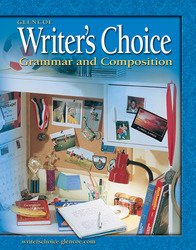
Writer's Choice Grade 6Unit 12: AdjectivesOverviewWithout adjectives, it would be hard to give people a clear picture of something you are describing. Picture an apple. If you use adjectives when writing or speaking, you can make the apple you see appear in your audience's mind too. Is it red or green? Is it a Granny Smith apple or a Gala apple? Is it the largest green apple of the bunch? Or is that one larger? Adjectives answer these questions: What kind? How many? Which one? Some adjectives follow a linking verb, for example, "That stunt was great !" These are called predicate adjectives. Proper adjectives are formed from proper nouns, or specific names of people, places, or things; as in French cooking, Victorian home, or Granny Smith apple. Like proper nouns, they are capitalized. Articles are special kinds of adjectives. The points to a specific item or items. A and an refer to any one item of a group. The grocer picked an apple for a boy. The words this, that, these, and those are called demonstrative adjectives. They are used to point out something. This apple tastes tart! Adjectives can also be used to compare. Imagine you're at the grocery store and there are several different kinds of apples to choose from. You want to know, " Which of these apples is juicy?" You might pick up a Granny Smith apple in one hand and a Gala apple in your other. "Which one is juicier?" you ask. The grocer might pick up a third kind of apple and tell you, "This one is the juiciest." The comparative form of an adjective (juicier) compares two things or people. The superlative form of an adjective (juiciest) compares more than two things or people. |  |















